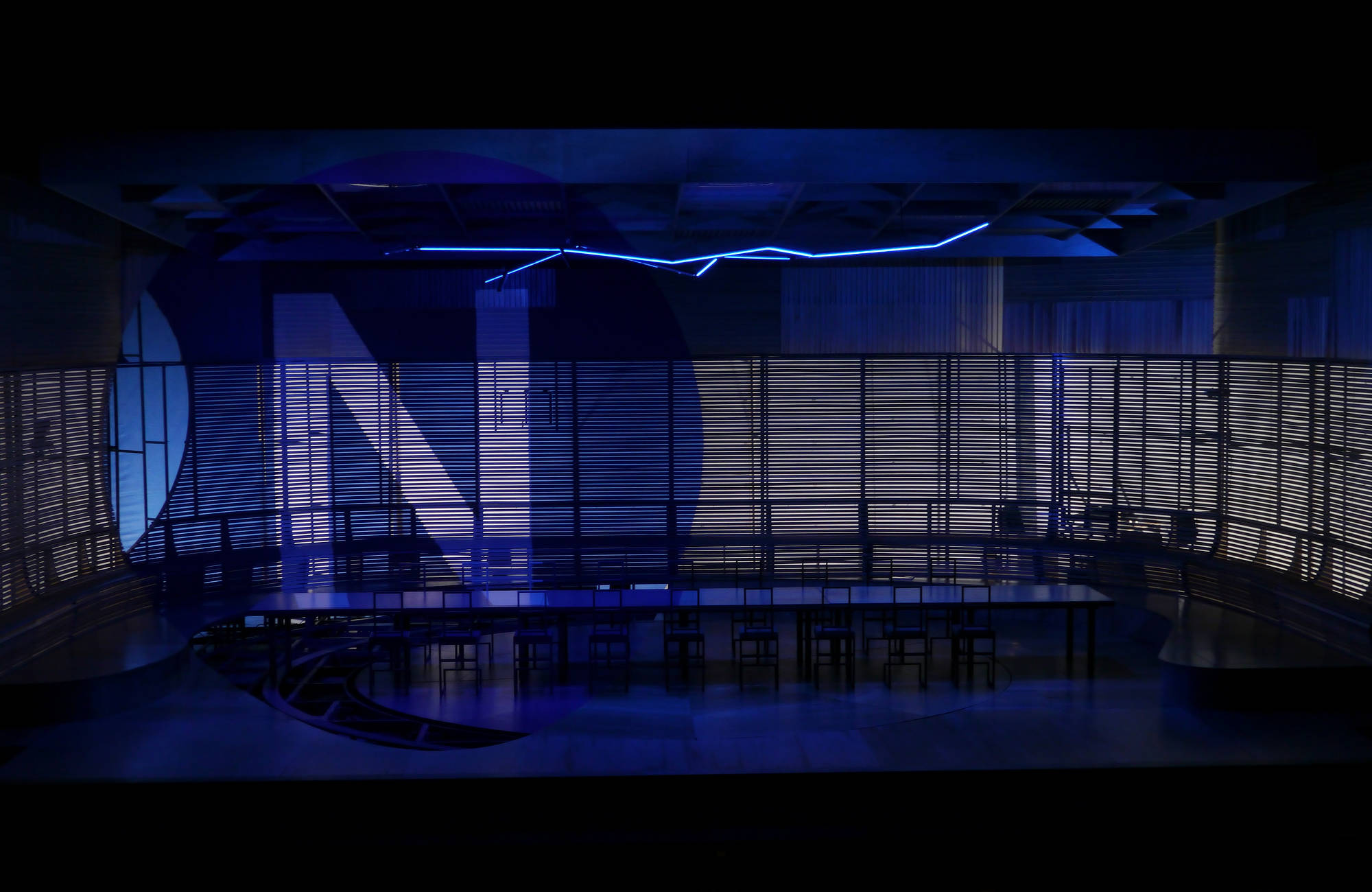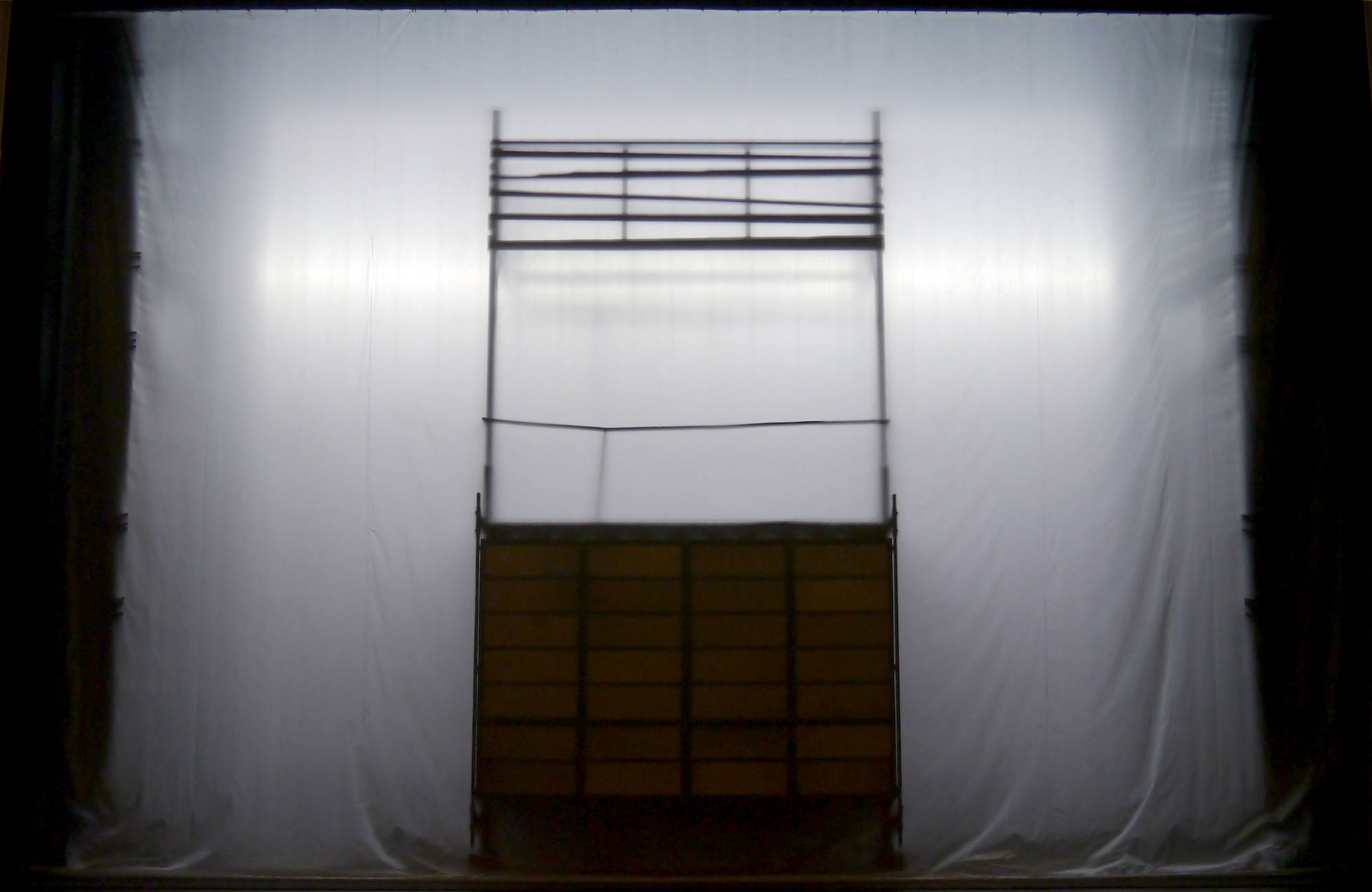Biography
Winter, 2024 – Lighting & Scenic Designer Rick Martin has been creating visual works for theatre, opera, dance and other live events for over twenty-five years. His work has been seen across the United States, throughout Europe and South America. Longtime collaborator with the Bordeaux-based company Clarac-Delœuil > le lab, he has created works with Le Lab in the United States, France, Germany, Belgium, Portugal, Brazil, Argentina and elsewhere. Founding member of the San Francisco based theatre collective Thick Description, Rick has designed the premieres of many new works including by playwrights Octavio Solis, Brighde Mullins, Eric Ehn and composer David Conte.
For Charles Fee, producing artistic director of Great Lakes Theater and the Idaho Shakespeare Festival, he has designed over 100 productions over the course of his career. Rick has designed many original works, including premieres by playwrights Christopher Durang, Chiori Miyagawa, Will Power and Neena Beber. He has advised architects and designers on the creation of new performance spaces in New York, California, Ohio, Nevada and Idaho and has taught Lighting and Spatial Design at Bennington College, Fordham University and Carnegie Mellon. Rick’s work has appeared in many publications, including Lighting & Sound America and The Norton Anthology of Drama.
Biographie
Hiver, 2024 – Collaborateur régulier de Jean-Philippe Clarac et Olivier Delœuil (Clarac-Delœuil > le lab), Rick Martin a créé la scénographie pour La Trilogie Da Ponte (Mozart) et la scénographie et les lumières pour Mitridate, re di Ponto (Mozart) présenté par la Monnaie et Harawi, Chant d’amour et de mort (Messiaen), présenté à l’Opéra Comique à Paris. Il a créé les lumières de plusieurs de leurs spectacles : Madama Butterfly (Puccini) à l’Opéra de Rouen, Dialogues des Carmélites (Poulenc) à l’Opéra de Toulon, Le Diable dans le beffroi et La Chute de la Maison Usher (Debussy) à l’Opéra National de Paris, Le Martyre de saint Sébastien (Debussy) à la Cité de la Musique à Paris, La Symphonie fantastique et Lélio (Berlioz) avec l’Orchestre des Champs-Élysées, la Dante Symphonie (Liszt) couplée avec Et exspecto resurrectionem mortuorum (Messiaen) avec l’Orchestre National de Lyon ainsi que, récemment, Serse (Haendel) au Staatstheater Nürnberg.
Il a également créé les lumières de leurs mises en scène à l’Opéra Français de New York. À San Francisco, il a cofondé le collectif Thick Description, qui a commandé et créé deux opéras de chambre du compositeur David Conte (America Tropical et Firebird Motel). Très présent sur les scènes de théâtre, ballet et danse contemporaine aux États-Unis, Rick Martin a créé des scénographies et lumières pour Music- Theatre Group, l’Idaho Shakespeare Festival, Great Lakes Theater Festival, Henry Miller Theater, 92nd Street Y, PS 122 et la Manhattan School of Music. Il a travaillé avec les chorégraphes Dana Reitz, Gordon Pierce Schmidt, Anna Sokolow et Peter Anastos. Rick Martin a enseigné la création lumières et la conception spatiale à la Fordham University, à la Carnegie Mellon University et au Bennington College. Son travail a été présenté dans le magazine Lighting & Sound America et l’anthologie The Norton Anthology of Drama.
Quotes
We nevertheless regret the insanity of the lighting by Rick Martin, which does not translate in our opinion all the contrast of shadows fundamental in the climate of this work.
– Cristian Jarnait, Metamag
We will not say that we find a deep meaning in this raw theatre background… ironically lit in shades of sour candy by lighting designer Rick Martin – although this emptiness is perhaps a sign of destitution…
– Benito Pelegrin, Classique News
Bold and demanding… an admirable concert, sadly polluted by visual redundancies… as useless as [it was] pretentious… against the spirit of the score, [it] poisoned the listening of an inaugural concert…
-Antonio Mafra, Le Progres
From the stark and disturbing bare plank-wood set, to Rick Martin’s overly bright lighting, the entire production screams extreme… I was uncomfortable from the start of the play.
– Roy Berko, Cleveland Critics Circle
All this… is – needless to say – very devoid of visual seduction. The eye is solicited from all sides. There are almost constantly three points of attention to follow, so that one always has the somewhat frustrating impression of having missed something and that a constant, very unpleasant disorder invades the stage. The vision presented is particularly dark and pessimistic, totally devoid of humanity (we doubt that the designers of the show have the slightest tenderness for their characters)…
-Claude Jottrand, Forum Opera



